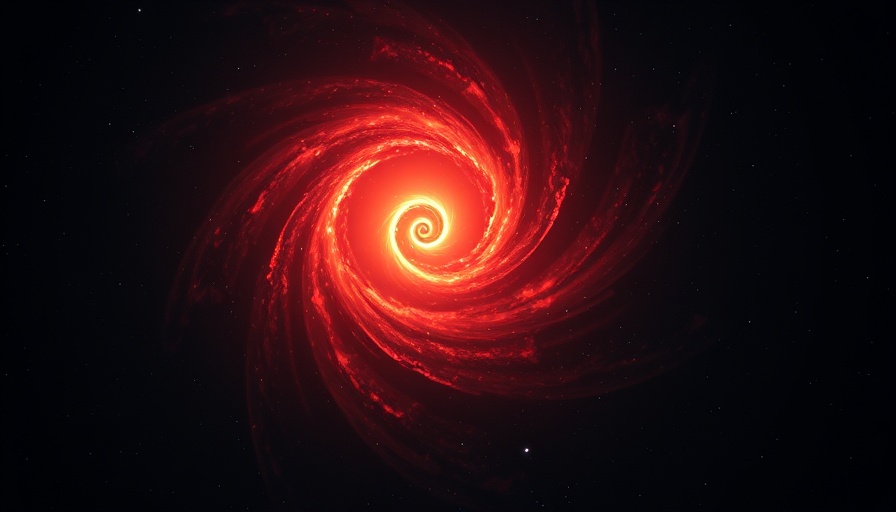
The Surprising Discovery Behind Wolf-Rayet 104
The enigmatic Wolf-Rayet 104, often dubbed the "pinwheel star" or even the"Death Star," has long captivated astronomers due to its stunning visual appearance and potential astronomical significance. Recent research conducted at the W. M. Keck Observatory in Maunakea, Hawaiʻi, has unveiled unexpected findings regarding the star's orbital dynamics. Contrary to earlier assumptions that suggested the two stars within WR 104 were aligned directly towards Earth, new data reveals they are actually tilted at an angle of 30 to 40 degrees away from our line of sight, significantly reducing fears of a potential gamma-ray burst (GRB) aimed at Earth.
A Closer Look at the Cosmic Dance
The dual nature of this star system is fascinating. WR 104 consists of a massive Wolf-Rayet star, known for generating a strong, carbon-rich wind, and a more massive companion OB star which emits a hydrogen-rich wind. The interaction of their intense stellar winds forms a rotating pinwheel structure visible in infrared light. Since its discovery in 1999, WR 104 has continually intrigued astronomers, demonstrating how cosmic phenomena can behave in ways that challenge our understanding.
Relief from the 'Death Star' Moniker?
The previous fears surrounding WR 104 sprung from the belief that its poles could direct a GRB toward Earth when one of the stars concludes its lifecycle with a supernova. Earlier models suggested it was nearly face-on to our perspective, compelling many to dub it a potential "death star" due to the catastrophic implications a GRB could entail, such as significant destruction of the ozone layer and potential harm to life on Earth.
However, as Grant Hill, a key researcher at Keck Observatory highlights, the actual physics of the star's alignment presented a completely different picture. The unexpected tilt of the stars' orbit suggests that even if a GRB were to occur, it would not be pointed towards Earth, alleviating immediate concerns for our planet's safety.
The Importance of Continuous Observation
This discovery emphasizes the value of ongoing research and observation in astronomy. As technology improves and observational methods advance, scientists expect to encounter more surprises like those presented by WR 104. Hill's work with spectroscopy has opened doors to better understand the physics governing such complex stellar interactions.
While the current implications of WR 104 may not pose a direct threat, it reinforces the reality that as we study the universe, we often unveil mystery layers that challenge previous assumptions. Each discovery enhances our understanding of cosmic dynamics and may lead us to confront even greater questions about the universe.
Looking to the Future: Potential and Risk in Astronomy
The findings regarding WR 104 teach us valuable lessons not only about the stars but also about our universe. This star system serves as an excellent case study in the importance of reevaluating our assumptions based on new data. The modeling of stellar behaviors can lead to unpredictable and fascinating outcomes, as highlighted by Hill’s comments on the surprises astronomy can hold. Future research on WR 104 may lead to further revelations about the chances of distant, potentially hazardous phenomena.
Conclusion: The Journey of Discovery Continues
All these incremental discoveries—from the dynamics of interacting stars to the safety of our planet—illustrate the intricacies of space phenomena and the fundamental quest for understanding the cosmos. While the pinwheel star may no longer carry the ominous title of the "Death Star," it remains a subject of fascination that embodies the spirit of scientific inquiry and revelatory discovery.
 Add Row
Add Row  Add
Add 




Write A Comment